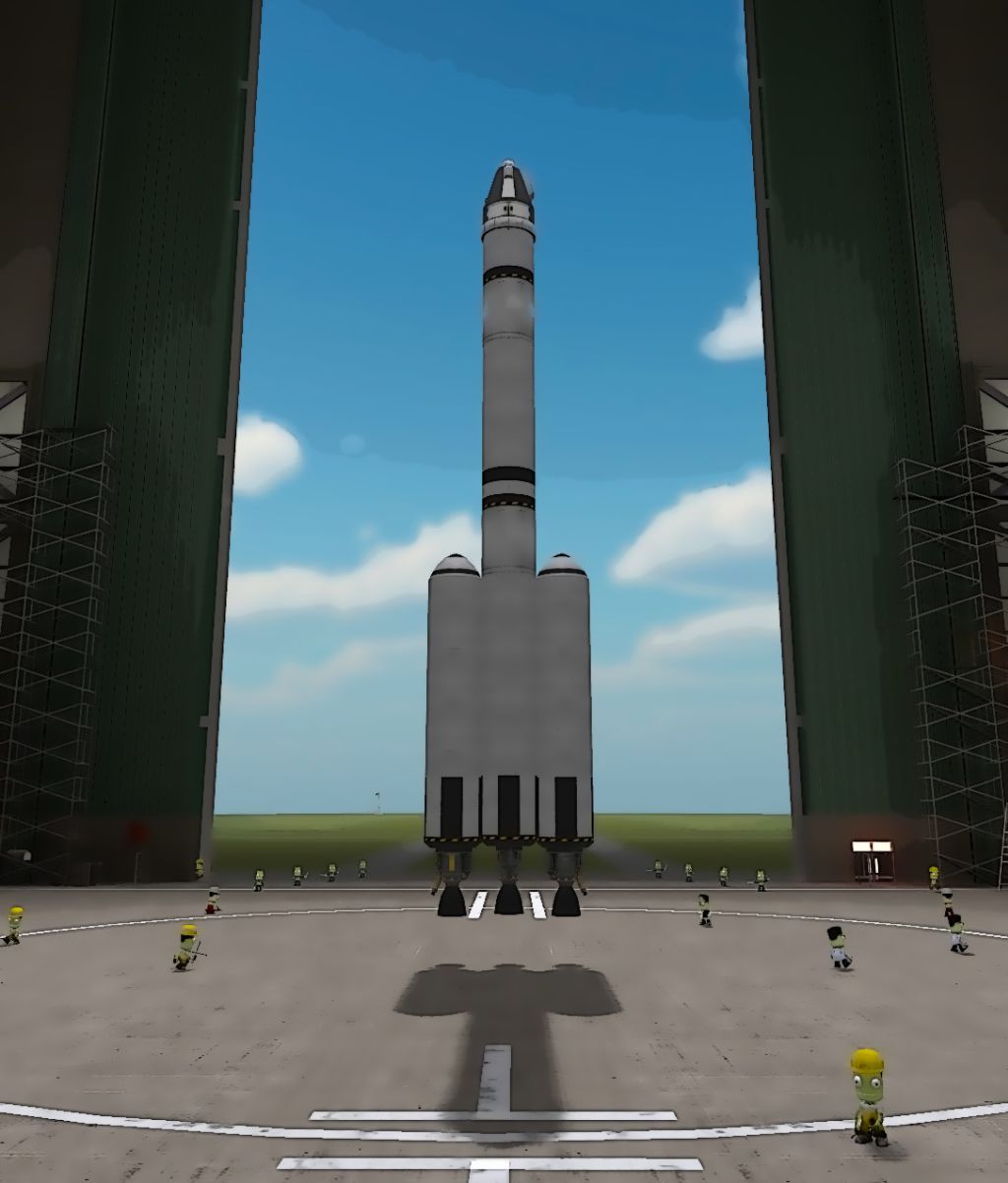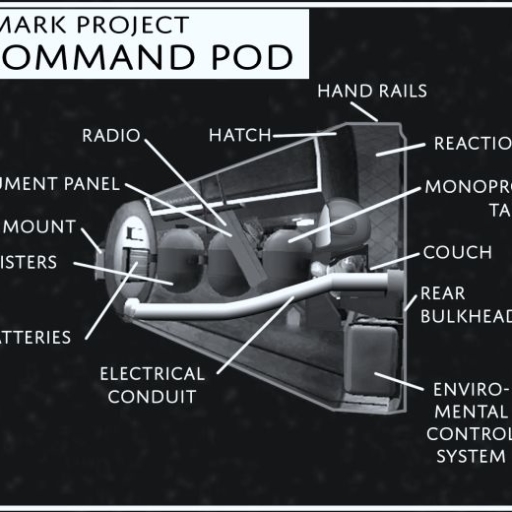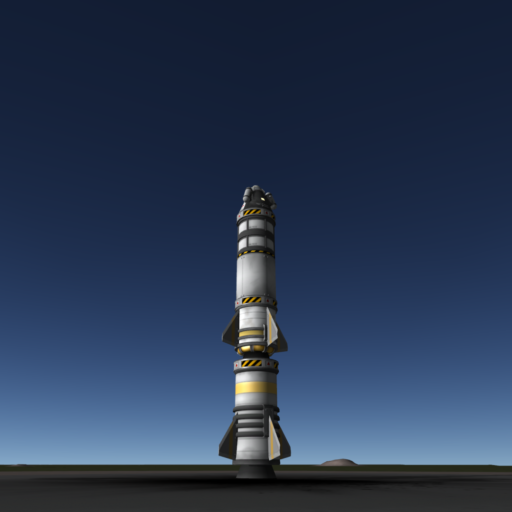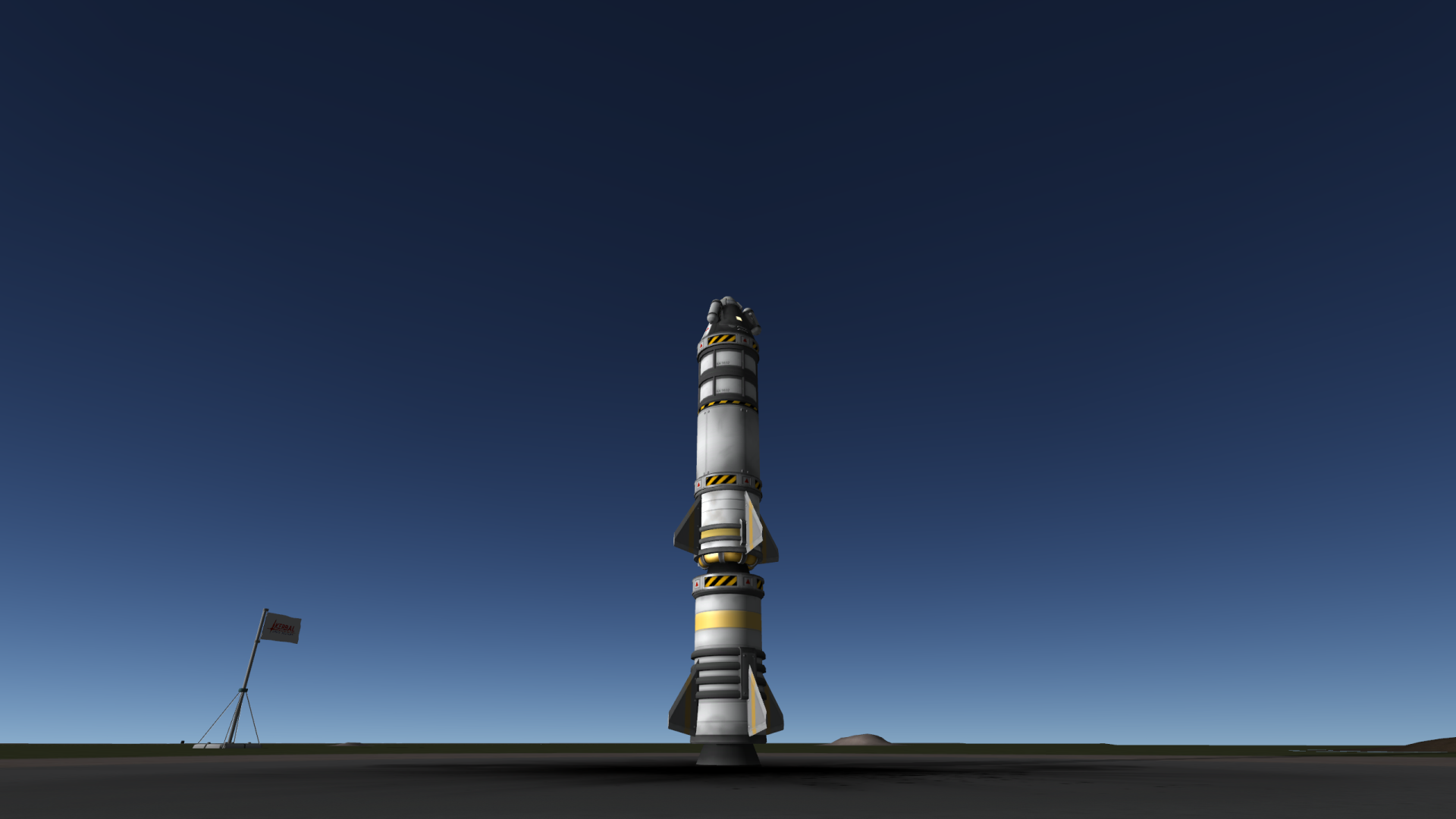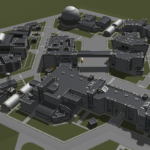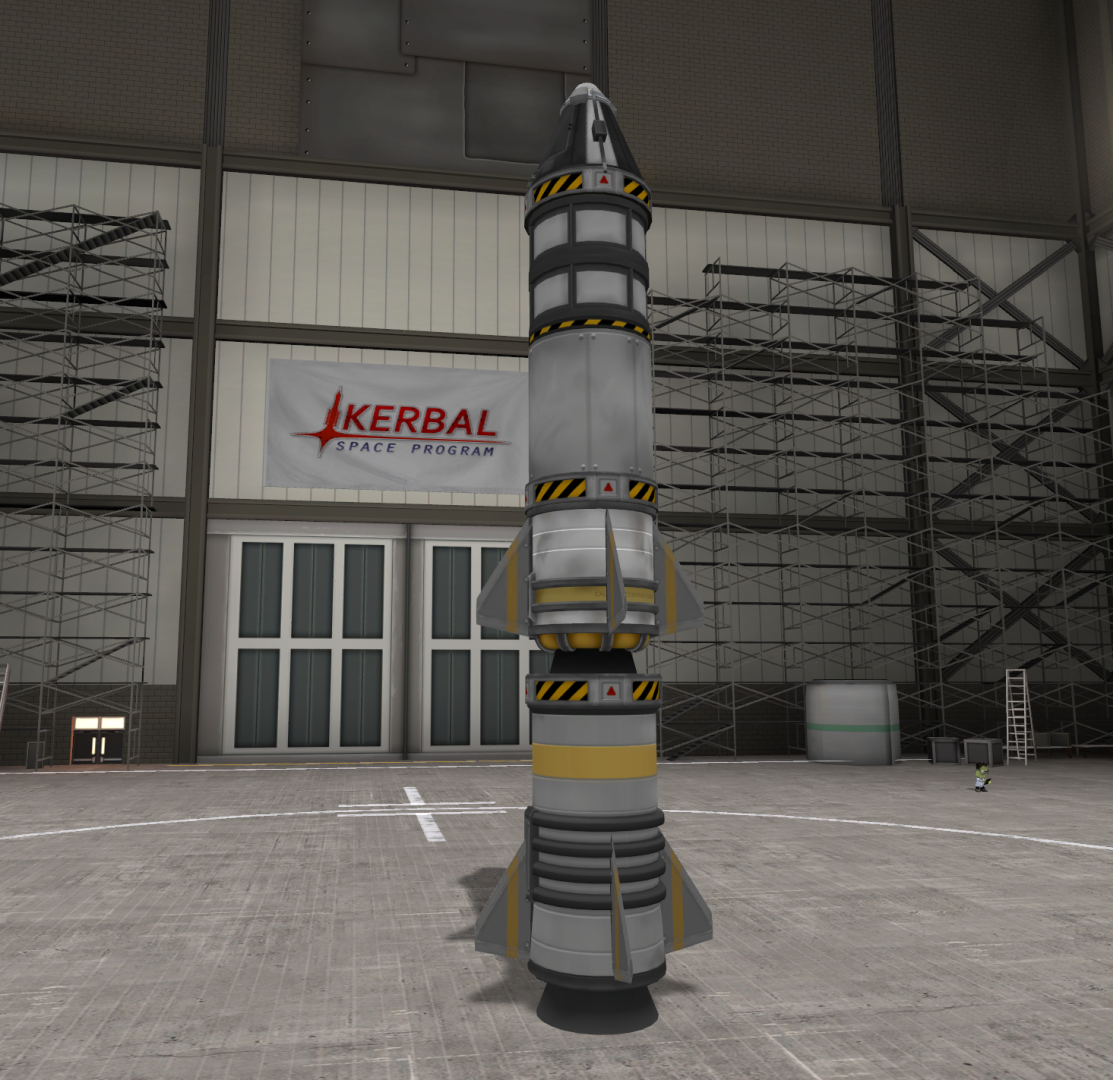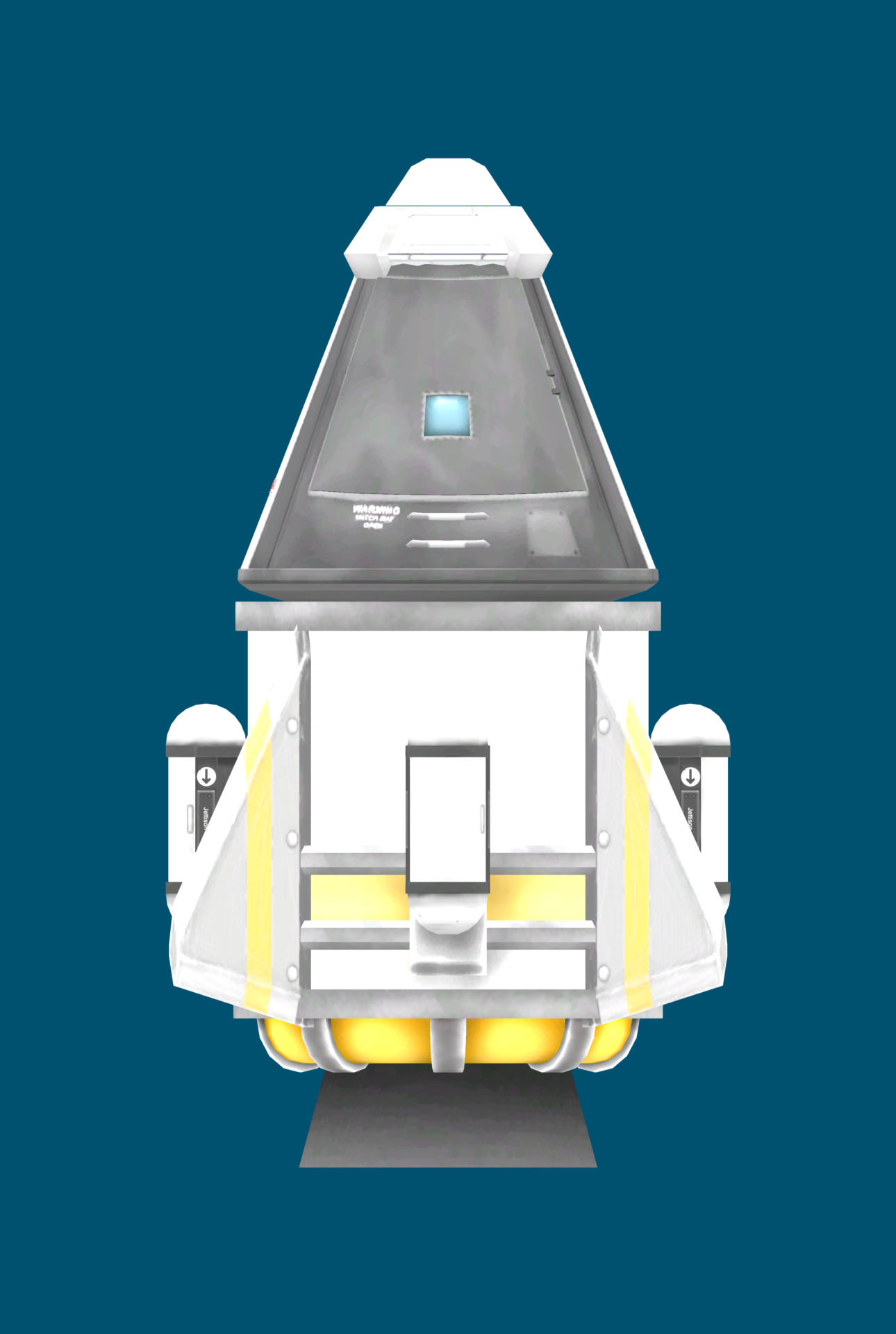As expected, today the Kerbal Space Center held a press conference to announce the next flight in the Mark program, the Mark Four. This next launch promises to be the most technologically advanced and ambitious launch in Kerbin’s history. Unveiling a dramatic new launch vehicle configuration, they also announced that they feel that this is the first vehicle design that might have enough lifting ability to actually achieve orbit.
After the Mark Three test flight, the LV-T45 liquid engine’s performance impressed KSC’s engineer so deeply they have decided to go with an all liquid fueled rocket. This decision directly lead to a full redesign of the launch vehicle, allowing the engineers to consider a bewildering array of different designs, until slowly narrowing them down until this final design emerged- an unusual three-and-one arrangement.
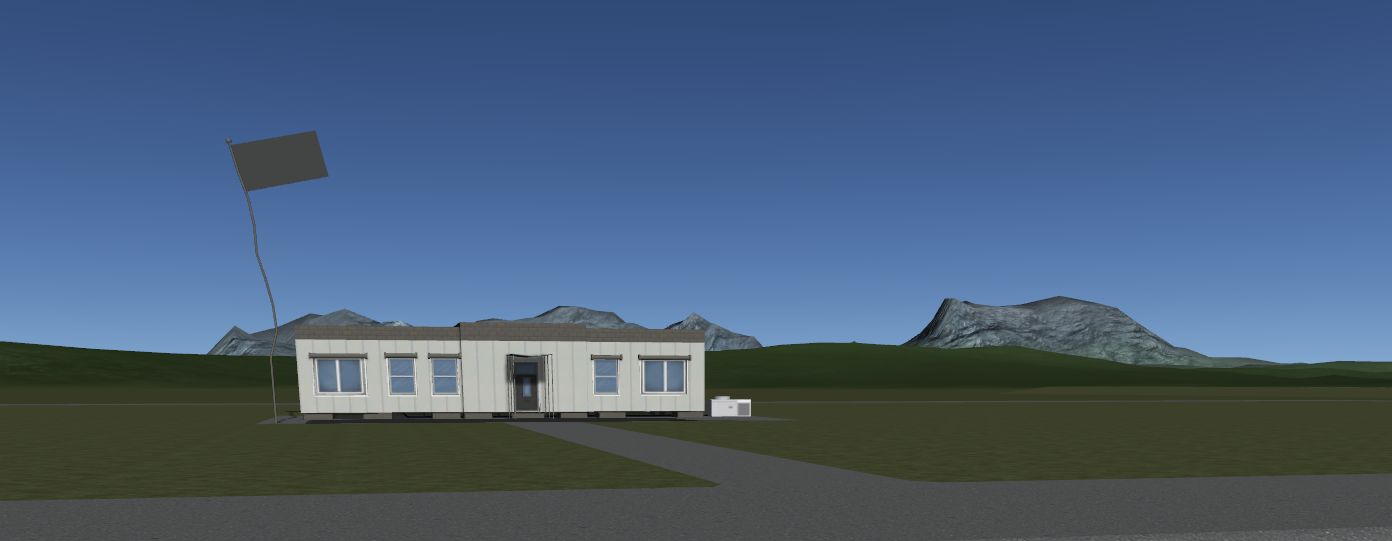
“We had considered a tremendous number of designs- when we were brainstorming no idea was disregarded. Soon we realized that a reasonably tight grouping of engines all pointing in the same direction seemed most effective,” said Wernar von Kerman (no relation to author) . “But even then, how many engines? What arrangement should they be in? A line? A circle? A triangle? The discussions and debates were endless, but in the end yielded what we feel is the optimal design.”
That design is based on the same LV-T45 third stage engine from the Mark Three mission (see our Mark Three vehicle description here), although attached to a much taller tank section. The designers wanted to be able to sustain the thrust from the LV-T45 engines for much longer than the Mark Three, so they needed to expand the available fuel. They achieved this by refining and redesigning the FL-T100 fuel tank making them bigger, thus holding more fuel and oxidizer. This new tank was designated the FL-T200, and even this new, bigger tank wasn’t big enough, and this issue became a major sticking point in the design process.

The breakthrough came when one engineer was attempting to carry more beverages than he had hands, and solved the problem by stacking one can on top of the other, and then picking both up from the bottom can. Realizing that he was now carrying twice as much malted beverage than before, he began wondering if something similar might work for the fuel, and soon the “stacked” fuel tank was born. We wish we could name this brilliant engineer, but due to the type of beverage being consumed that night, no-one can remember exactly who it was.
This stacked fuel tanking is used extensively on the Mark Four, and is the primary reason the craft is so tall and slender, topping out at twenty meters. But stacking only solved one problem- the duration that the liquid engines could run. But that left the other problem- all that fuel was heavy, and running a single LV-T45 could only lift so much.

Therefore the second major breakthrough on the Mark Four- and probably the most obvious to the casual observer. The first stage consists of three complete LV-T45 stacks, fuel tanks and engine, all bolted together in a line. The external two stacks are topped with a gentle dome to help divert airflow, and the central stack is where the second stage is boosted and decoupled.
This remarkable, some would say radical, design for the first stage proved to be the other major factor in why the Mark Four was so delayed. At least nine different designs for the first stage were investigated before the team settled on the three-in-a-row, second-stage-in-the-middle design (also known as the 3-2 variant) as being optimal in thrust, stability, and having the highest chance of mission success.
Another significant addition to this flight is the addition of a “Service Module”, which is kind of cargo hold for any additional equipment or supplies that will accompany a kerbonaut into space. The scientific payload on the Mark Three capsule was attached directly to the exterior of the Mk1 Command Pod, which was not an optimal place for them. For the Mark Four, the Service Module will contain the science equipment in an enclosed space just below the Mk1 Command Pod and will be shielded from reentry by the heat shield and return to Kerbin with the Command Pod.
The mission objectives for this flight- “the investigation of sub-orbital and ballistic near-orbit trajectories through orbital flight” will be covered in a follow up article shortly.


